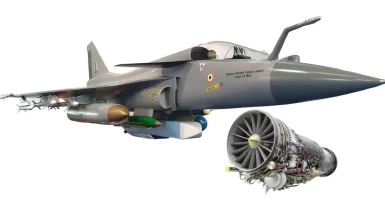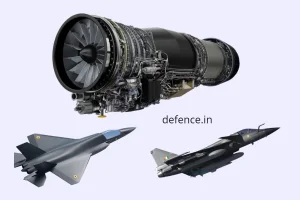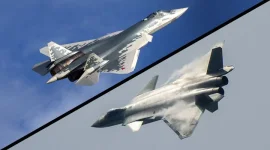- Views: 7K
- Replies: 25
Delays in the supply of F-404 engines from General Electric (GE) Aerospace have cast a shadow over India's Tejas Mk1A program, raising concerns about potential setbacks in aircraft delivery.
This has ignited a debate about the feasibility of transitioning to the more powerful GE F-414 engines, currently earmarked for the Tejas Mk2. While the F-414 promises enhanced performance, integrating it into the Tejas Mk1A would necessitate significant modifications.
F404 vs. F414: A Comparative Overview
At first glance, the F404 and F414 share similarities in length (154 inches), suggesting minimal need for alterations to the Tejas Mk1A's engine bay. However, key differences exist:- Diameter: The F-414's slightly larger fan diameter (35.5 inches compared to F404's 35 inches) might require adjustments to the engine housing and cooling systems.
- Thrust: The F-414 delivers significantly higher thrust (98 kN) than the F404 (84 kN), promising increased speed, climb rate, and payload capacity for the Tejas Mk1A. This, however, necessitates enhanced cooling and structural reinforcements.
- Weight: The F-414 is slightly heavier (1,110 kg) than the F404 (1,036 kg), potentially impacting the aircraft's center of gravity and maneuverability.
Feasibility of Integrating the F-414 into the Tejas Mk1A
Despite these differences, integrating the F-414 into the Tejas Mk1A appears technically feasible, albeit with modifications:- Cooling and Heat Shielding: The F-414's higher thrust output demands improved heat shielding and potential exhaust area modifications.
- Engine Mounts: Minor adjustments to the existing engine mounts might be necessary to accommodate the F-414's weight.
- Intake Modifications: The Tejas Mk1A's intake design might require minor alterations to ensure sufficient airflow for the F-414.
- Software and Control System Integration: Engine control software updates are crucial to manage the F-414's operating characteristics.
- Structural Reinforcement: Reinforcements around engine mounts and adjacent airframe areas are likely needed to handle increased stress.
Performance Gains and Trade-offs
Switching to the F-414 could yield significant performance gains for the Tejas Mk1A:- Improved Thrust-to-Weight Ratio:Enhanced agility, acceleration, and shorter takeoff runs.
- Enhanced Operational Ceiling and Payload Capacity:Higher altitude capabilities and increased ordnance capacity.
- Complex Integration and Cost: Modifications, software integration, and testing would increase program costs and potentially delay induction.
- Increased Weight and Fuel Consumption: This could reduce operational range unless mitigated by additional fuel storage.
Conclusion
While integrating the F-414 into the Tejas Mk1A is technically feasible, it requires careful consideration of the costs and benefits. Given the Tejas Mk2's existing adoption of the F-414, adapting the Mk1A might be less cost-effective unless F-404 engine delays persist.Alternative solutions include expediting the Tejas Mk2 program, exploring domestic F-404 engine production, or stockpiling existing F-404 engines to maintain Mk1A production momentum.
Ultimately, the decision hinges on a comprehensive evaluation of technical feasibility, cost-effectiveness, and strategic considerations.



